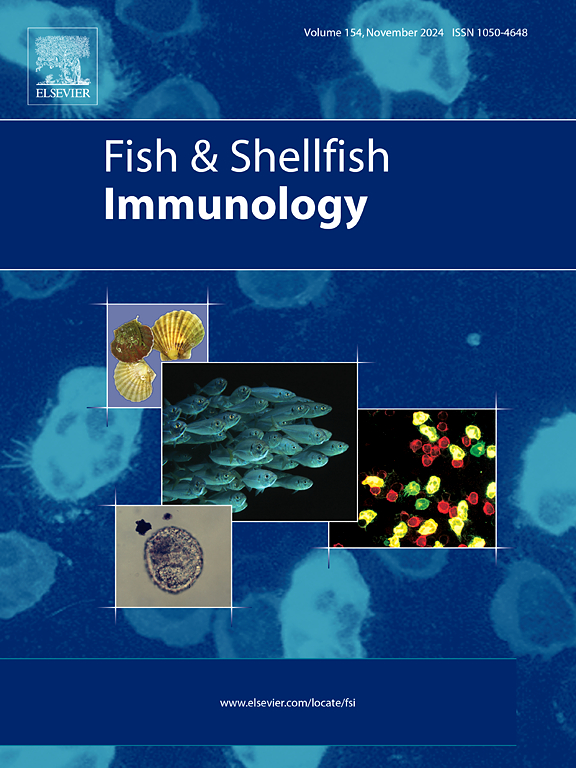Unveiling the impact of shrimp piRNAs on WSSV infection and immune modulation
IF 4.1
2区 农林科学
Q1 FISHERIES
引用次数: 0
Abstract
Piwi-interacting RNAs (piRNAs) are small non-coding RNAs that play a crucial role in gene regulation and immune defense. This study investigates their function in Penaeus vannamei shrimp during White Spot Syndrome Virus (WSSV) infection. Analysis of small RNA libraries from WSSV-infected shrimp hemocytes identified 82,788 piRNA homologs, with 138 showing altered expression during infection. Putative piRNAs were mapped to both the P. vannamei nuclear and mitochondrial genomes, highlighting their diverse origins. Interestingly, some piRNA sequences from uninfected shrimp mapped to both the shrimp and WSSV genomes, suggesting potential subversion or integration of viral fragments into the host genome. We focused on piR-pva-926938, a downregulated piRNA targeting the WSSV186 gene. Introducing piR-pva-926938 into WSSV-infected shrimp suppressed WSSV186 expression, but paradoxically increased viral load by downregulating host immune genes like calcineurin B and dynamin-binding protein. This study is the first to report WSSV-responsive piRNAs in shrimp and reveals the complex interplay between piRNAs, viral genes, and host immunity during WSSV infection.
揭示虾pirna对WSSV感染和免疫调节的影响。
piwi相互作用rna (piRNAs)是一种小的非编码rna,在基因调控和免疫防御中起着至关重要的作用。本研究探讨了它们在感染白斑综合征病毒(WSSV)时在凡纳美对虾中的作用。对感染wssv的虾血细胞的小RNA文库进行分析,鉴定出82,788个piRNA同源物,其中138个在感染期间表达改变。假定的pirna被定位到南美p.v annamei的核基因组和线粒体基因组,突出了它们的不同起源。有趣的是,来自未感染虾的一些piRNA序列同时映射到虾和WSSV基因组,这表明病毒片段可能被颠覆或整合到宿主基因组中。我们重点研究了piR-pva-926938,这是一种靶向WSSV186基因的下调piRNA。将piR-pva-926938引入感染wssv的对虾中,抑制了WSSV186的表达,但却通过下调宿主免疫基因钙调磷酸酶B和动力蛋白结合蛋白而增加了病毒载量。这项研究首次报道了对虾WSSV应答pirna,并揭示了在WSSV感染过程中pirna、病毒基因和宿主免疫之间复杂的相互作用。
本文章由计算机程序翻译,如有差异,请以英文原文为准。
求助全文
约1分钟内获得全文
求助全文
来源期刊

Fish & shellfish immunology
农林科学-海洋与淡水生物学
CiteScore
7.50
自引率
19.10%
发文量
750
审稿时长
68 days
期刊介绍:
Fish and Shellfish Immunology rapidly publishes high-quality, peer-refereed contributions in the expanding fields of fish and shellfish immunology. It presents studies on the basic mechanisms of both the specific and non-specific defense systems, the cells, tissues, and humoral factors involved, their dependence on environmental and intrinsic factors, response to pathogens, response to vaccination, and applied studies on the development of specific vaccines for use in the aquaculture industry.
 求助内容:
求助内容: 应助结果提醒方式:
应助结果提醒方式:


